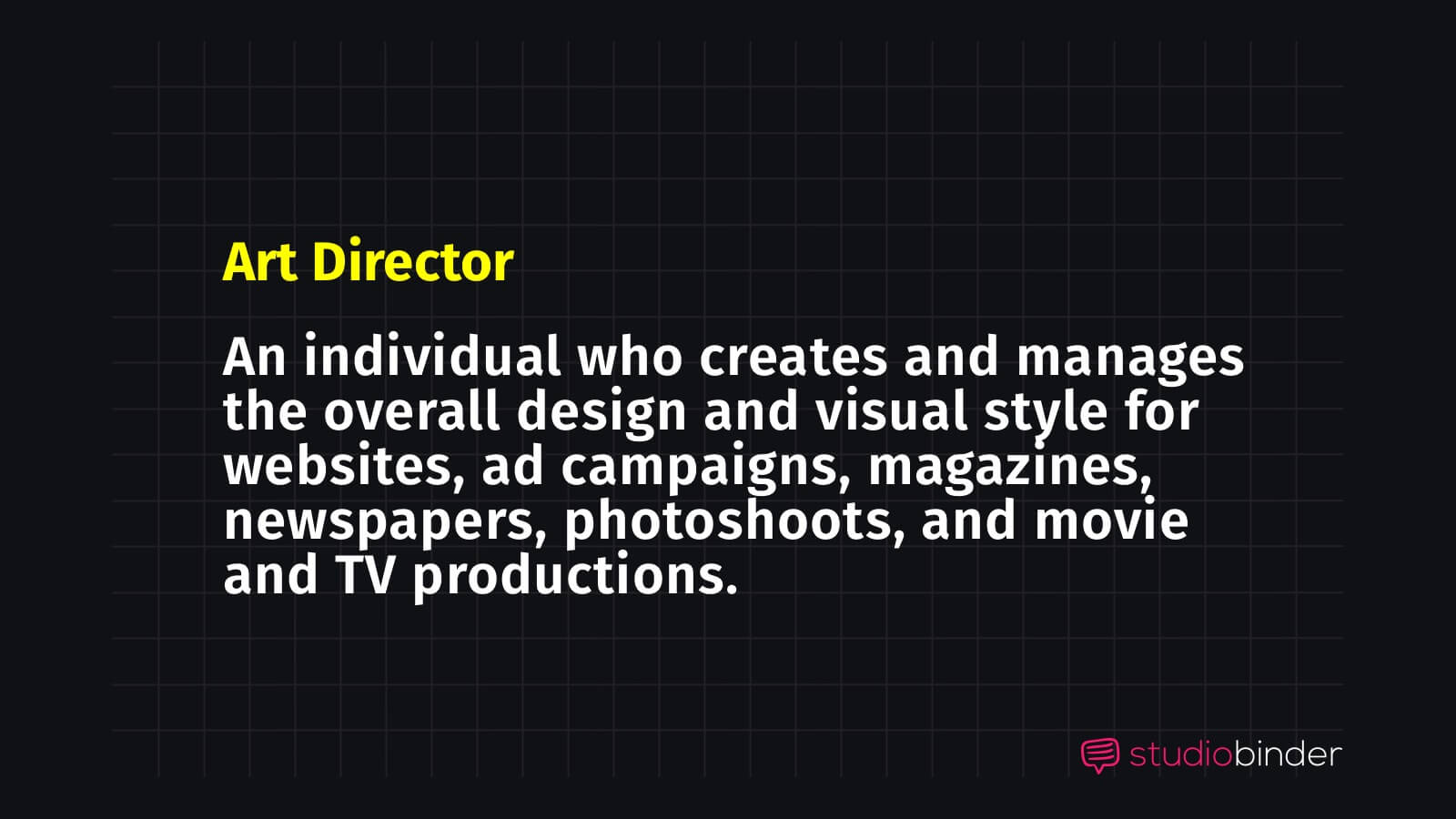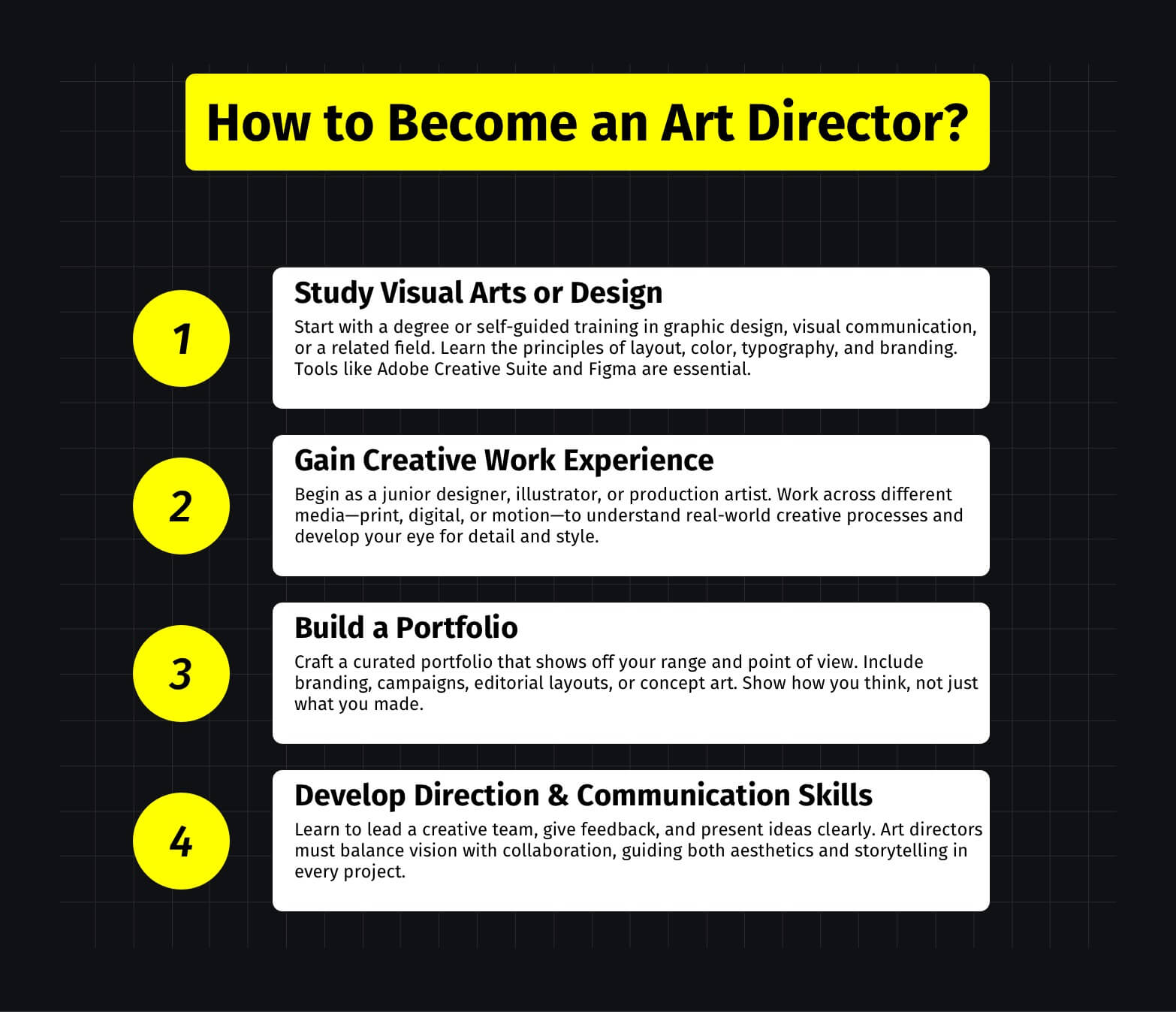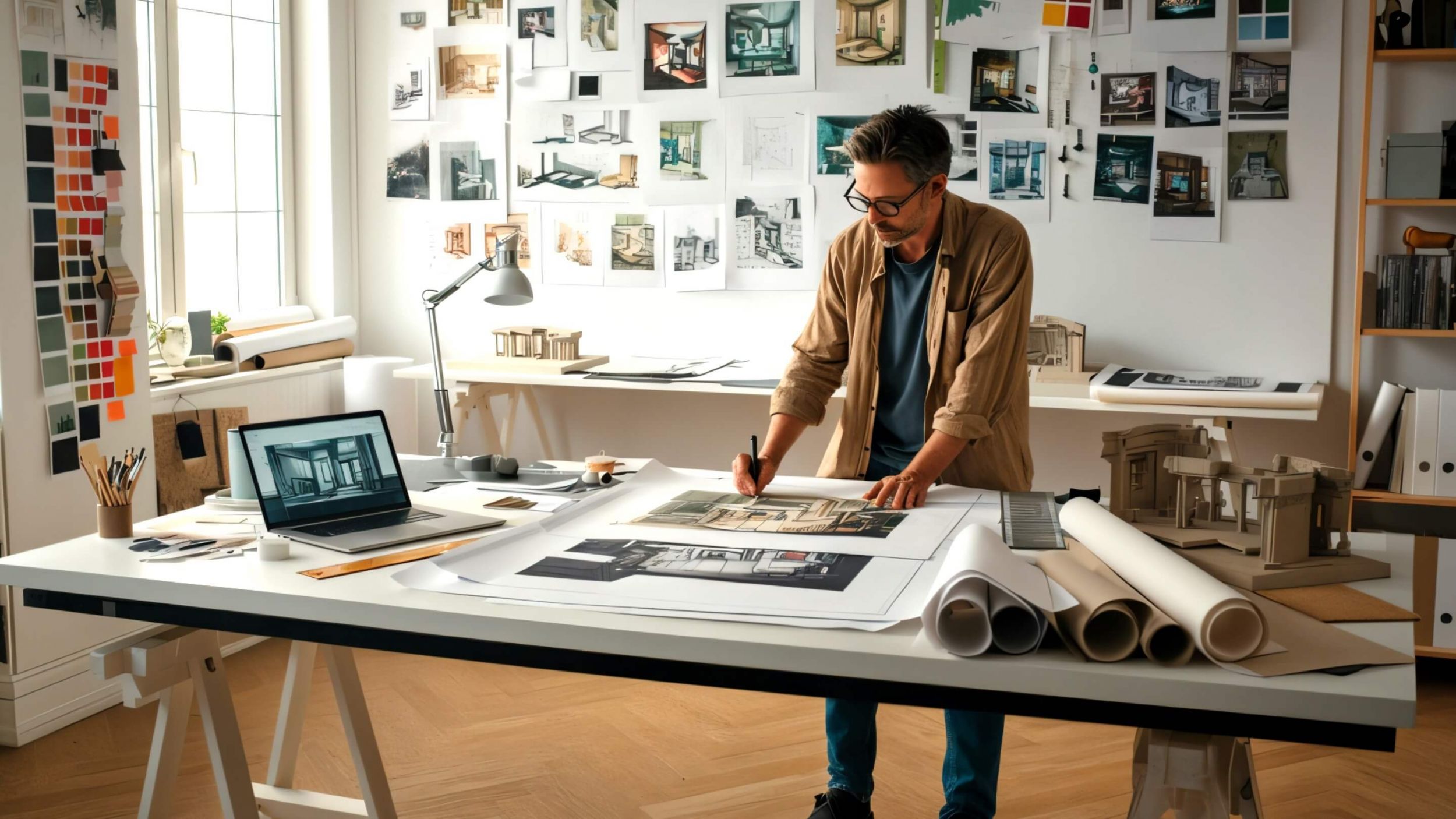Maybe you’ve seen the term art director in the credits of a movie, or on a call sheet, but you’re not quite sure what it means to be one. But what is an Art Director? Whether you’re an aspiring filmmaker looking to learn more, or a graphic designer who wants to know how to become an art director, this post is for you. We’ll outline the art director job description by defining the role. Let’s jump into the basics.
Art Director Job Description
What does an Art Director do?
For those in advertising and branded content or those interested in making movies, being able to answer, "What is an Art Director" is critical to the project's success. But the biggest obstacle there is know why kind of Art Director we're talking about. Essentially, the Art Director job description doesn't change a whole lot between advertising and filmmaking but there are key differences to keep in mind. For a complete guide to the major roles in film production, check out our ultimate guide to film crew positions.
ART DIRECTOR DEFINITION
What is an art director?
An art director is someone who creates and manages the overall design and visual style for websites, ad campaigns, magazines, newspapers, photoshoots, and movie and TV productions. While their duties vary depending on the industry they’re in, they set the general artistic tone, using imagery and aesthetics to bring concepts to life. They direct other designers to develop artwork and various layouts per project, overseeing the project from inception to completion.
WHAT DOES AN ART DIRECTOR DO?
- Determines how to present concept visually
- Selects which photos, art, or other elements to use
- Develops overall style and communicate to team
- Manages and supervises designers
- Reviews and approves designs
- Communicates with clients to develop an artistic approach/style
- Coordinates with all artistic departments
- Develops budgets and timelines for project completion
As mentioned above, an Art Director job description varies depending on the industry. And, apparently, Art Director responsibilities are just as hard to explain from actual working professionals. Let's hear from some of them in this video before we go any further.
What is an Art Director? • Open Door Creative
Now that we have a handle on the broad strokes of Art Director roles and responsibilities, let's look at little closer based on the particular industry.

What Does an Art Director Do • Art Director Definition
Movie/TV Production
What does an Art Director do in film?
Art directors collaborate with crew to determine what sets are needed for each scene. They are usually the production designer’s second-hand. On smaller sets and photoshoots, they can be one-in-the-same. They also participate in hiring and supervising assistant art directors and other designers.
Here's veteran Art Director Terry Ackland-Snow (The Dark Crystal, Aliens, Batman and more) on how the boundaries of the job vary from project to project, especially when it comes to budget.
Terry Ackland-Snow's Art Director Description • Cooke Optics TV
Moving on, let's discuss another major avenue for aspiring Art Directors: the wonderful world of advertising.
Related Posts
Advertising Art Director
What does an Art Director do in adverts?
It’s the art director’s responsibility to ensure that the client’s intended message is delivered clearly and creatively to consumers. To do this, the art director directs and coordinates with designers until the images or visual style is reflective of client’s vision.
Check out this video from Ka-Lok Ho as he walks us through the entire creative process behind a commercial he made.
Creative Art Director Description from Ka-Lok Ho
In advertising, especially videos and commercials, the Art Director responsibilities have to account for not just color, style, branding, etc. They also have to consider how moving images contribute to the overall presentation. When cinematography, editing, music, pacing, and more get added to the equation, the typical Art Director job description has to expand.
Publishing and Print
What does an Art Director do in print?
By now, it might be obvious what the Art Director responsibilities for print might be. They determine the page layout, cover artwork, and overall visual style of magazines, books, and even online publications. These concepts of presentation, style, aesthetics, branding, etc. have just as much power in print than they do in the other mediums we've discussed.
In fact, they might even be more important here because you often have only a single image to tell a story or sell a product. Here's a look behind the scenes at Vogue on how they approach art direction.
What does an Art Director Do at Vogue? • British Vogue
At this point, we should have a firm grasp on just how variable any Art Director job description can be. If any of these avenues sound interesting to you as a career, there are certain steps to take. In the next section, we'll run through some tips on what it takes to become an Art Director.
Related Posts
ART DIRECTOR REQUIREMENTS
Becoming an Art Director
If you want to become an art director for branded content, having a knowledge in graphic design is required. Creating a strong portfolio can lead to incredible opportunities. But the role demands novel and innovative imagery everyday. Luckily, you can get more prolific with practice.
But becoming an art director isn’t limited to the ability of creating magic behind a computer; it also demands people skills.
Leadership and the ability to take criticism is vital. Whether this criticism is coming from the client or even your own design team. While executing and communicating your vision is part of the job, humility is too.
Collaborating and determining the best imagery to match a client’s (or film’s) vision, is required to lead a team and do an effective job. The goal is to produce the best product possible.
Let's go back to Open Door Creative as they break down a year-long syllabus for anyone looking to start becoming an Art Director.
How to Become an Art Director in One Year
According to Salary.com, the average Art Director salary in the U.S. is $126,914 per year. Not bad! Granted, this number is based on many factors including education, previous experience, and your skills.
As with many jobs, a college degree isn't absolutely necessary but it sure does help. That would be at least a B.A. in Fine Arts. And one you have either a degree, experience, a portfolio, or any combination of those, it's time to start applying for jobs.

How to Become an Art Director
RELATED POSTS
Up Next
Best Text Graphic Trends
If you’re creating branded content for yourself, or a client, even films, you’ll need to know how to use text. Knowing the current trends in text graphics and seeing why they work, might inspire your own designs. Check it out below.
Up Next: Text Graphic Trends →
Project management for video creatives. Tasks, file sharing, calendars and more.
Manage video production timelines, tasks, storyboards, shot lists, breakdowns, call sheets. Made for video creatives, new media and film.
